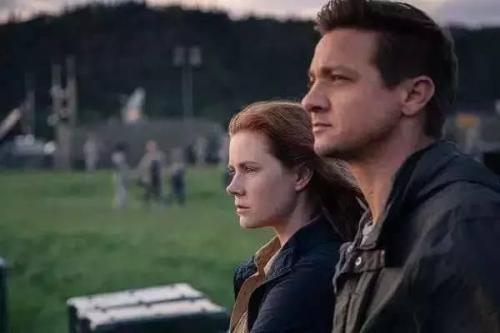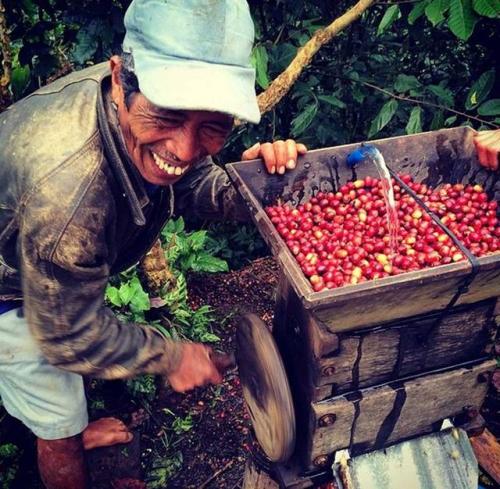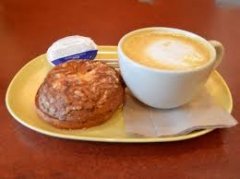Starbucks Sumatra Coffee Bean Source Story PWN Gold Mandolin Why is it called Gold Mandolin
There are thousands of stories, and there is a unique story charm behind each product. Sumatran coffee, what we drink is not delicious, but feelings, so today I would like to tell you about Sumatran coffee. There is no love and hatred of TV plots, no ups and downs of movies, and no humorous and funny drama. It's a long story. If you want to hear it, I'll tell it!
The story begins like this:
Speaking of UFOs, is this the first image that appears in your mind?

So far, my favorite flying saucer is it.
Because it looks like the side of Arabica coffee flat beans.
This is the 2016 science fiction blockbuster "coming."

In the movie the arrival, there is a scene in which the heroine linguist Louise Banks tells a story to military Colonel Webber:
Captain Cook arrived in Australia in the 18th century and asked the aborigines what the animal that was jumping around was. The answer was "kangaroo", hence the English word kangaroo.
However, Cook does not know that the word is actually the vernacular for "what are you talking about?"
After the colonel left, the hero Hawkeye said, good story.
The hostess said, "it's fake, but it works." "

There are similar scenes in the coffee world.
On February 14, 1942, 320 Japanese planes were parachuted near Palin, an oil field in Sumatra.
In less than a month, the governor of the Netherlands surrendered.
On March 15, Consumer Rights Protection Day, Japanese troops occupied Indonesia.
After the Japanese occupied Sumatra until the emperor announced his surrender in 1945, there was basically no large-scale attack, and life was very leisurely.
One day, a Japanese soldier was drinking coffee in a Sumatra cafe and felt good, so he asked the boss, "what is this?"
The boss thought he was asking him: where are you from?
Say: Mandailing.
In fact, this is a common human phenomenon, people always think that others pay attention to themselves first, so they are used to self-expression.
Probably because of this, he naturally thinks he deserves more attention than coffee.
Indonesia has 17508 islands, large and small, and more than 300 ethnic groups. Each ethnic group has its own relatively independent characteristics, so each ethnic group has its own identity. Sumatra was colonized by Britain and the Netherlands successively, so the boss did not have any fierce reaction to the arrival of the Japanese army.
Ying!

In other words, this coffee still left a deep impression on Japanese soldiers.
After the war, the Japanese soldiers returned to Japan alive, recalling the coffee they drank in Sumatra and vaguely remembering the name "Mandheling".
So he called a Medan named Pwani and asked him to buy a batch of "Manning Coffee".
The question is, what on earth is this false "manning coffee"?
Mr. Pwani is likely to start a quick analysis with his head covered.
The earliest coffee beans in Indonesia were in 1696, when the Governor of the Netherlands in Malabar in India gave a batch of coffee seedlings to the Governor of the Netherlands in Batavia Batavia (present-day Jakarta). This was the first time that coffee was grown in Indonesia.
However, the first coffee seedlings were washed away by the flood.
In 1699, Batavia accepted the gift again.
This time, the coffee seedlings survived successfully and ushered in the first harvest in 1701, which began the coffee journey in Indonesia.
At that time in Europe, coffee was already very popular in the upper class.
Indonesian coffee began to supply the European market in 1711, when Indonesia was the first country outside Africa and Arabia to grow coffee on a large scale.
The Dutch are "sea coachmen" and hope to ship coffee beans to Europe soon.
So in 1718, the Dutch transplanted coffee from Java to the Mandaining Highlands on the west side of Sumatra, saving several days on the voyage back to the Netherlands because of its proximity to the Indian Ocean.
Coffee farmers used to call this coffee Java Mandaining coffee. However, the climate here is not suitable for the growth of tin card coffee, but more suitable for low-altitude Robusta, so Java Mandaining was transplanted to the mountainous area of Lake dopa (Lindong) in Jiangsu Province. The main coffee growers in Jiangsu Province are Mandaining and Batak. Later, I found that the Aceh Special Zone in the north of Jiangsu Province was cooler.

So in 1924, it moved northward to Lake Acitawa (Gaiyou Mountain Gayo Mountain), which was mainly planted by the Gaiyou people.
With that in mind, Mr. Pwani has a rough idea.
Most of the Arabica coffee beans in Sumatra are in Lake dopa and Lake Tawa, so 15 tons of beans from the Lake dopa area were sent to Japan, and the results were very good.
Mr Pwani registered with Pwani Coffee Company, a company that once specialised in Manning in the Lake dopa region.
However, due to more defective beans, the Japanese hand-selected four times to remove defective beans, the quality is more pure, such coffee is Golden Gold Mandheling. Nn
However, the Japanese worked hard to create this brand, did not expect to let Pwani's company to register first, the Japanese suffered a big loss.
This is roughly the story of Manning's misinformation, but the coffee story of Sumatra is more than that.
such as
Sumatra semi-washing treatment, also known as wet planing method

This method has its own characteristics.
Remove the peel and flesh of the coffee, remove the gum, and dry it while retaining the endocarp, but not completely dry to 10% of the moisture content of 12%, but remove the endocarp after partial drying.
At this time, the water content of raw beans is very high, the volume of coffee is very large, and the color is white. The large raw beans go into drying again, and the color gradually changes to dark turquoise.
If you want to make a living, you have a little green on your head. Manning's green is very recognizable.

Important Notice :
前街咖啡 FrontStreet Coffee has moved to new addredd:
FrontStreet Coffee Address: 315,Donghua East Road,GuangZhou
Tel:020 38364473
- Prev

What is Starbucks flat white Fragrance White Coffee? how to order some espresso Starbucks Coffee? is it high in calories?
"I'm not in the cafe, I'm on my way to the cafe." this sentence is not only a familiar advertising line, but also the best portrayal of Taiwanese coffee addiction. Not only in Taipei, but in every corner of every city, there is always a small cafe that makes people safe and comfortable outside their homes and companies.
- Next

Capsule coffee machine brand popularity list recommended [2019 latest edition] how to select capsule machine
Professional coffee knowledge exchange more coffee bean information please pay attention to the coffee workshop (Wechat official account cafe_style) has been popular for a while the capsule coffee machine, not only can quickly and easily brew coffee, and elegant and fashionable appearance, won the love of many tastes. Just put the capsule in the coffee machine and you can easily enjoy pure espresso. It's so attractive.
Related
- Beginners will see the "Coffee pull flower" guide!
- What is the difference between ice blog purified milk and ordinary milk coffee?
- Why is the Philippines the largest producer of crops in Liberia?
- For coffee extraction, should the fine powder be retained?
- How does extracted espresso fill pressed powder? How much strength does it take to press the powder?
- How to make jasmine cold extract coffee? Is the jasmine + latte good?
- Will this little toy really make the coffee taste better? How does Lily Drip affect coffee extraction?
- Will the action of slapping the filter cup also affect coffee extraction?
- What's the difference between powder-to-water ratio and powder-to-liquid ratio?
- What is the Ethiopian local species? What does it have to do with Heirloom native species?

